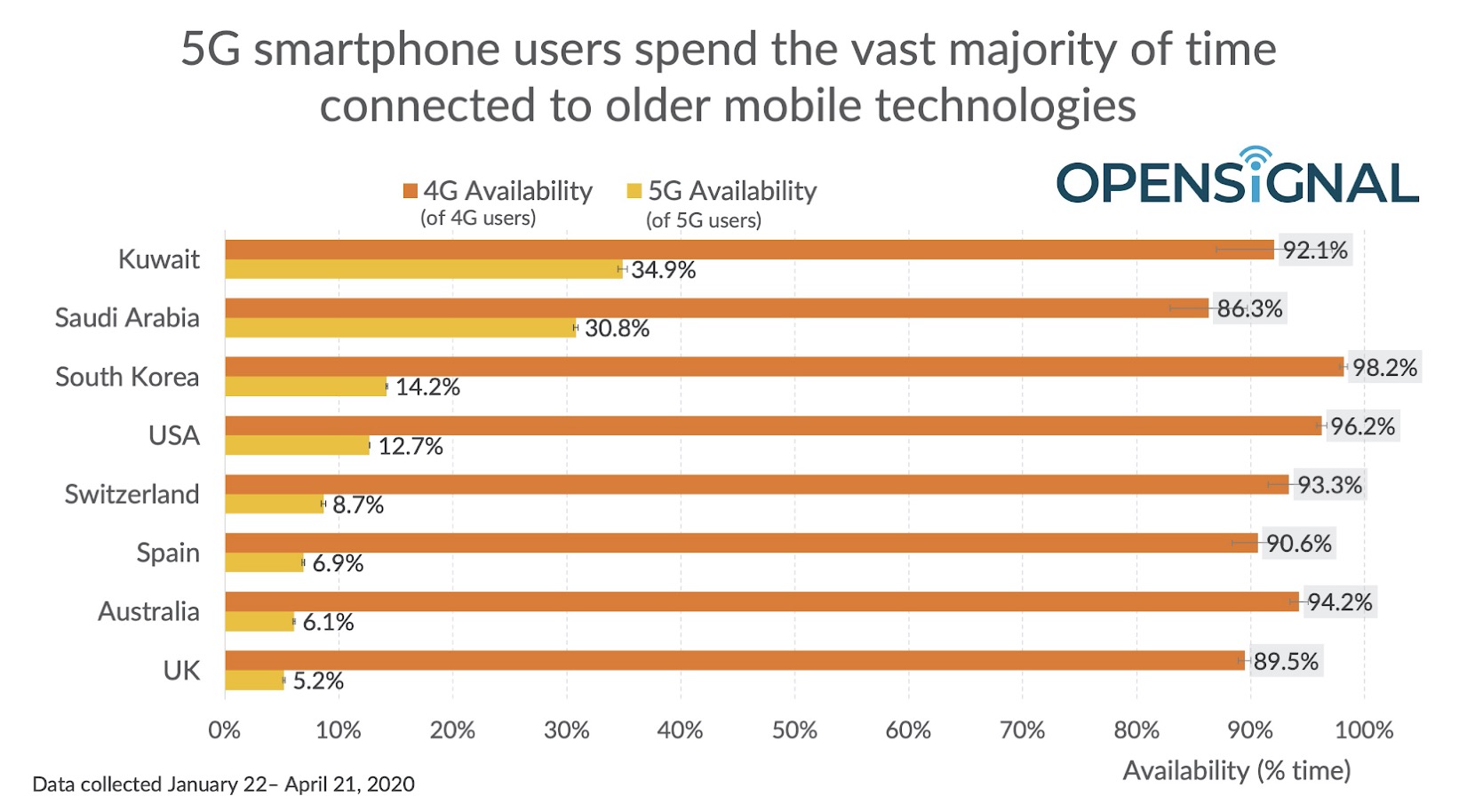Fifth-generation (5G) cellular networks have promised to deliver dramatically faster speeds than their 4G predecessors, and that promise is already being met in almost every country where 5G has rolled out — except the United States. As Opensignal’s latest international network performance comparison reveals, average U.S. 5G download speeds are still hovering below the country’s typical Wi-Fi speeds, an issue the wireless measurement firm attributes to the continued scarcity of U.S. mid band 5G spectrum.
Across Asia-Pacific countries, Europe, and the Middle East, 5G speeds are now multiples of local Wi-Fi averages, which range from 21.4Mbps to 74.5Mbps depending on the country. In top performer Saudi Arabia, 5G (291.2Mbps) averages over 13 times faster than Wi-Fi (21.4Mbps), and nearly 12 times faster than 4G (24.4Mbps); in the United Kingdom, the second-worst performer, 5G (146.8Mbps) is still over 4 times faster than Wi-Fi (34.1Mbps) and 5.5 times faster than 4G (24.9Mbps).
By contrast, U.S. cellular performance continues to lag behind other countries — an issue that was expected to be addressed with the rapid adoption of 5G technology. Businesses and consumers were expected to start merging their mobile and home/office data plans together using 5G hardware that was at least as fast as wired broadband, if not much faster. Instead, localities have held up high-speed 5G small cell deployments over siting concerns, forcing U.S. carriers to rely heavily on lower frequency radio towers, which work over long distances but deliver slow speeds.
The real-world impact is obvious, Opensignal suggests. U.S. Wi-Fi (59.8Mbps) is currently faster than in many countries, and twice as fast as U.S. 4G (27.7Mbps), but 5G averages only 52.3Mbps — slower than Wi-Fi, and not even twice as fast as 4G. That’s a bad start for the next-generation technology, and especially concerning since the U.S. lagged behind much of the developed world during the 4G era. Many parts of the country are still saddled with sluggish cellular speeds well below the standard’s capabilities.
June 5th: The AI Audit in NYC
Join us next week in NYC to engage with top executive leaders, delving into strategies for auditing AI models to ensure fairness, optimal performance, and ethical compliance across diverse organizations. Secure your attendance for this exclusive invite-only event.

Another issue affecting many 5G deployments is the smaller availability of 5G towers compared with 4G. Even in the Middle East, where 5G was available over 30% of the time to users in Kuwait and Saudi Arabia, that percentage pales by comparison with the 86% to 92% availability of 4G there. Consequently, 5G device users still live with 4G performance most of the time. But in the United States, 5G availability was only 12.7% — and slow — while the bottom-performing U.K. offered a meager 5.2% availability for its faster 5G service, compared with nearly 90% for 4G.
If there’s any good news from the report, it’s that 5G is still in early deployment stages, so the numbers will certainly improve; it’s just a question of when, and by how much. In the U.S., higher-speed 5G is certainly coming, both in the form of more high band millimeter wave small cells and additional mid band frequencies as the FCC continues to reclaim them from incumbent users. Opensignal is already seeing faster speeds on those bands, both in early U.S. millimeter wave deployments and in foreign countries where 5G is largely based on mid band 3.5GHz spectrum.

